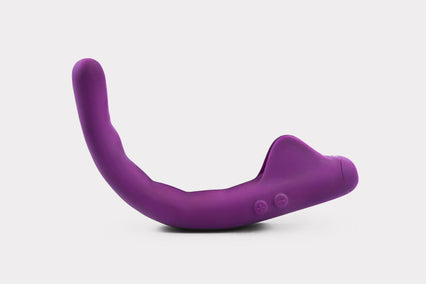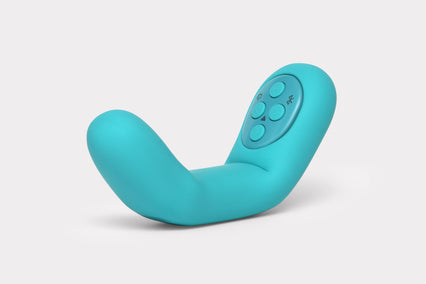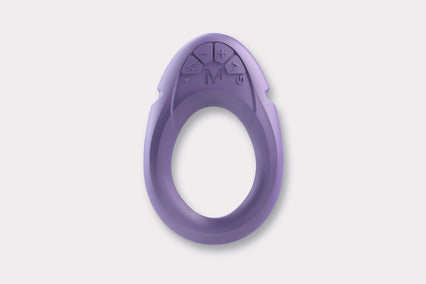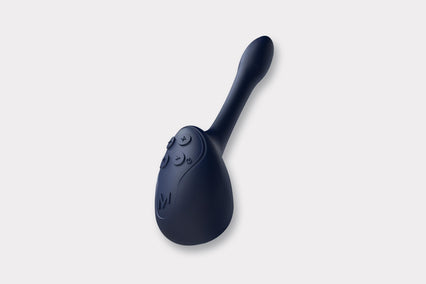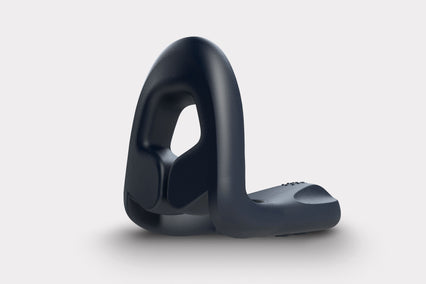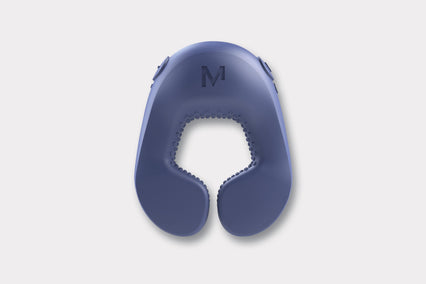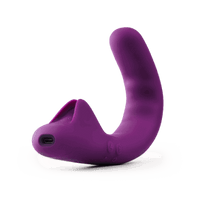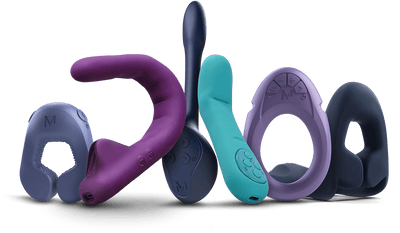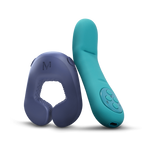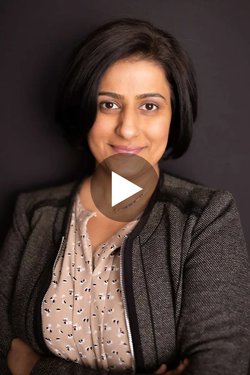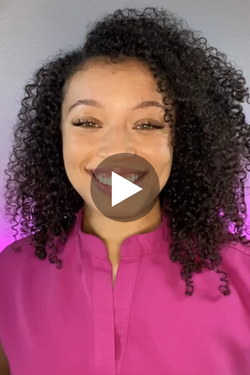Written By: Somatic Sexologist and Sex Coach Alice Child
Desire isn’t black and white, it changes, and evolves throughout our lives. Many things can impact our sex drive, such as context and stimulus.
We each have our own unique formula – the right combination of context and stimulus that creates arousal and the desire for sex. Creating the right context for desire to build is what is known as responsive desire, and understanding what it is and how to trigger it can be life-changing for people who want to increase their desire for sex and capacity for pleasure.
What is responsive desire?
Responsive desire is the growing interest in sex that occurs in reaction to sexual stimuli. Even if you’re initially not in the mood for sex, if you give yourself enough time, context and pleasurable stimulation you can become aroused and desire sex! This is known as responsive desire.
This stimulus could be anything; physical closeness with your partner, a make out session, a sensual massage, watching your partner undress, a hot bath… it really depends on what works for you.
These stimuli are what sex educator and researcher Emily Nagoski describes as your ‘accelerators’ in her best-selling book, Come As You Are. Accelerators are your list of sexual turn on’s - you own secret weapons that you can use to help you relax, connect with your pleasure, and kindle the spark of desire.

Responsive vs spontaneous desire
The other form of desire is spontaneous desire. Spontaneous desire is a spark of interest in sex that seems to come out of thin air. Unlike responsive desire, your mental interest in sex seemingly comes out of no where, without any external stimulus.
This is the sort of desire that is most commonly depicted in popular culture - in TV, movies, porn and literature. Media depictions contribute to people with a responsive desire type feeling that they have a low libido - because they don’t respond like the people they watch on TV.
Responsive and spontaneous desire are both very common, normal and healthy. However, we talk about responsive desire far less. Many people don’t know their desire style or what accelerators they need to use to allow it to thrive.
- Responsive desire: Giving yourself enough stimuli to allow yourself to be in the mood for sex. Physical arousal comes before desire.
- Spontaneous desire: When you’re already in the mood for sex without the need for more stimuli. Desire usually comes before physical arousal, or they come hand-in-hand.
Who experiences responsive desire?
While everyone can experience responsive and spontaneous desire, research suggests that spontaneous desire is more common in men. Emily Nagoski notes that “as many as 75% of men compared to 15% of women report spontaneous sexual desire”.
In contrast, about 5% of men and 30% of women report feeling responsive desire. This means in general women need more context, time and stimulus to get in the mood.
It’s important to note that desire styles can change over time. People who report spontaneous desire in the early stages of their relationships may experience more responsive desire over time. That shift is completely normal. Like we mentioned, desire isn’t cut and dry, some people experience a combination of both responsive and spontaneous desire.

How to trigger responsive desire
1. Understand your own brakes and accelerators
Using Emily Nagoski’s language, if your accelerators are everything you need to feel turned on, your brakes are everything that will distract you and get in the way of desire building. Everyone’s proverbial brakes and accelerators are different, so take time to understand yours.
Consider times when you were really in the mood and reflect on that. What was going on for you? What helped you feel that way? What was happening physically, emotionally, mentally and erotically? What sort of stimulus makes you feel relaxed, sexy, aroused, and safe? These can be alone and with a partner. Write out a list of all your accelerators.
Consider times when you had a low desire for sex, or kept getting distracted and couldn’t get in the mood. Reflect on what could be contributing to the lack of desire then. What was happening physically, emotionally, mentally and erotically? Write out a list of all your sexual breaks.
2. Create a life with more accelerators than brakes
Once you have more of an understanding of your own turn on’s and turn off’s, begin mindfully creating a life that enhances your accelerators, and reduces your breaks. Do this both inside and outside the bedroom - because every aspect of your life informs your sexual desire.
For example, if you realize that one of your brakes or turn off’s is feeling unclean, bad smells, and getting body-odor conscious with your lover, you might decide to fill your bedroom with gorgeous new fresh bedding and scented candles, or make showering after work a part of your daily routine.
If a major accelerator or turn on is feeling confident and healthy in your body, you might choose to invest in certain clothing that makes you feel good or put more conscious thought into making healthy lifestyle choices.
Get creative, and build an environment, life and mindset that feels sexual to you.
3. Take your time and remove unhelpful goals
Responsive desire can take time to build - both in your head and in your body. Go slowly, don’t rush anything, and remove unhelpful goals such as getting hard, reaching orgasm, or getting in the mood, on demand.
Instead, make pleasure your goal and lean into the things that maximize pleasure.
4. Incorporate a daily self-pleasure practice
Even when we are not in the mood to be sexual, keeping a daily pleasure practice helps trigger responsive desire. Sometimes desire can be a bit of a ‘use it or lose it’ situation, so start small and remind yourself what pleasure feels like.
Try setting aside time every day to do something that brings your body pleasure, whether that’s masturbating, taking a walk outdoors, or a sensual bubble bath. The more we feel pleasure, the more we crave it.
5. Masturbate more, and with more variation!
The more we explore our bodies, the more we awaken our responsive desire and spark our curiosity.
Stay curious, change it up, and see what you discover. Try different masturbation positions and techniques to give you variety, novelty, and different types of stimulation. Not only will masturbation teach you about your body, but it has numerous secondary benefits such as better sleep and reduced anxiety (which can also kickstart your responsive desire).

6. Learn what you need and communicate with your partner
It takes two to tango, and if you are trying to trigger responsive desire in a relationship, it helps if your partner knows your accelerators and can give you something to respond to. Communicate clearly with your partner about your likes, dislikes, fears, and desires. Ask for what you want and be descriptive. Remember, it’s a collaborative learning process, and it might take a few tries until your partner truly understands how to unlock your desire.
7. Educate yourself using sex-positive resources
Go out and learn as much as you can about sex, pleasure and bodies. Find the resources that work for you, whether that’s podcasts, books, online courses, workshops or seeing a sex coach. Surround yourself with sex-positive, body-positive, up-to-date education. Remember, good lovers are made, not born.
8. Try new things
Variety is the spice of life - and the bedroom. If you want to trigger responsive desire, it might be time to try something new. Novelty is a huge aphrodisiac.
Buy a new vibrator, try a new sex position, or explore a new fantasy with your partner. Is there something you’ve always wanted to try? Give it a go and see what you discover. After all, discovery is the gateway to desire.
There's no right or wrong when it comes to desire, and your sexual desire style may change over time - likely many times.
Knowing about the different possibilities for sparking and amplifying your desire type will help you stay in touch with it (and yourself) as it evolves.

